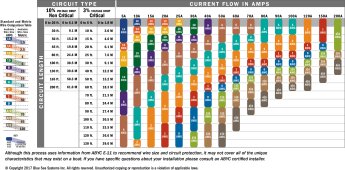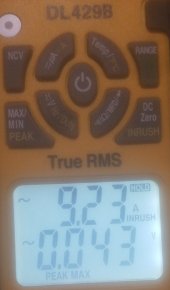Sam S
New Member
Hi all,
My name is Sam and I could use your help determining the appropriate wire gauge for my power station.
I am working on a portable power station with the following specs:
To help you assist me, I will run you through my thought process thus far:
Any insight you can offer would be most appreciated.
~Sam
My name is Sam and I could use your help determining the appropriate wire gauge for my power station.
I am working on a portable power station with the following specs:
- 200Ah lifepo4 battery
- 2000w inverter
- battery > fuse
- fuse > fuse block
- fuse block > BMS, and
- battery > inverter
To help you assist me, I will run you through my thought process thus far:
- For a load of 2000W, the current drawn from the battery (by the inverter) will be 200A (2000/10, according to Redarc).
- Further, my inverter has a surge capacity of 4000W. This, I think, means that the wire needs to handle up to 4000W. So 400A (4000/10).
- However (using jCalc), a 2000W load is divided by the voltage (12V) to calculate the current. That is: 167A (2000/12).
- Further, surge 4000/12 = 333A.
- As you can see, I've come across two different ways to calculate the current.
- If I go with jCalc's method of calculating current then I use Energy Matters' wire gauge calculator:
- I get: 24.4488 mm2 wire cross section (by plugging in 12V, 167A and 1m wire length) and 48.7512 mm2 (12V, 333A and 1m).
- However when using the enerdrive's cable sizing selection chart I get different results. For example, a wire length 0-8m up to 200A calls for a 67.5 mm2 wire cross section in this chart.
- So I am unsure whether I need 2AWG, 0AWG, 00AWG or potentially higher.
- Finally, I do not know if I need the same gauge (or varying) for the wiring that I am only concerned with at this moment.
Any insight you can offer would be most appreciated.
~Sam
Last edited:






